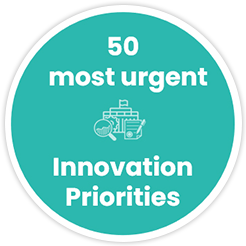-
Future-generation power network Stabilization Technology development for utilization of Renewable Energy as the Major power source (STREAM)
Project location: Japan
Main involved partners: Tokyo Electric Power Company Holdings (Japan), Central Research Institute of Electric Power Industry (Japan)
-

Starting Year-Ending Year
2022-2027
-

Funding Scheme Type
Public
-

Project Budget
11 M€
Project short description
Based on the outcomes of the prior project (Next-Generation Power Network Stabilization Technology Development), the STREAM project aims to develop key technologies that are essential to achieve Japanese government’s 2030 target of 36-38% for renewables in grid mix and 2050 target of carbon neutrality. The key technologies include countermeasures for decreasing grid inertia due to the decreasing share of synchronous generators in the grid, and for short circuit capacity.
STREAM project aims to develop next-generation inverters with a Grid Forming ability, which simulate inertial force for grid stability. Under STREAM project, these technologies will also be demonstrated at small-scale grids after the development phase.
The project is funded by Agency for Natural Resources and Energy (ANR) of the Ministry of Economy, Trade and Industry (METI), and executed by New Energy and Industrial Technology Development Organization (NEDO).
 Pillar 1
Pillar 1Affordable and
Reliable VRE
 Pillar 2
Pillar 2System Flexibility
and Market Design
 Pillar 3
Pillar 3Data and Digitalisation
for System Integration

- 1.6.11.6.2
 Pillar 1
Pillar 1Affordable and
Reliable VRE
-
T1.1 - Novel Photovoltaic
-
T1.2 - Offshore Wind Power
-
T1.3 - Integrated Renewable Energy
-
T1.4 - Off-grid systems
-
T1.5 - Energy Storage Suppy Chain, Recycle and Reuse
 Pillar 2
Pillar 2System Flexibility
and Market Design
-
T1.6 - Technologies for System Stability
1.6.11.6.2 -
T2.1 - Flexible Generation
-
T2.2 - Grid Flexibility
-
T2.3 - System Stability and Flexible Operations
-
T2.4 - Energy Storage lntegration
-
T2.5 - Demand-side and EV Flexibility
-
T2.6 - Flexible Systems Planning
-
T2.7 - Markets, Busines Models and Regulatory Framework
 Pillar 3
Pillar 3Data and Digitalisation
for System Integration
-
T2.8 - Flexibility from Sector Integration
-
T3.1 - Standards for Interoperability
-
T3.2 - Secure and Resilient Digital Energy Systems
-
T3.3 - Integrated Solutions

